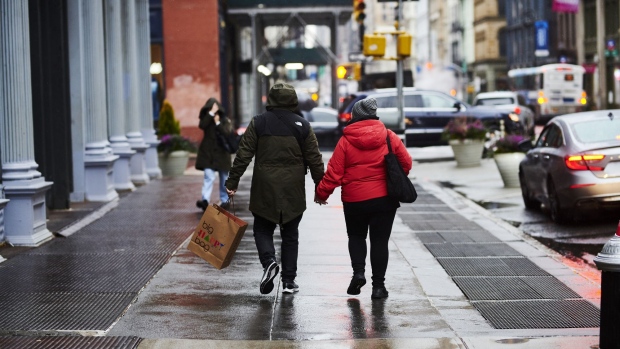Jan 13, 2021
U.S. core consumer-price gauge cooled slightly from prior month
, Bloomberg News

A key measure of prices paid by U.S. consumers cooled in December from a month earlier as slack in the labor market and muted demand helped keep inflation pressures tame.
The core consumer price index, which excludes volatile food and energy costs, increased 0.1 per cent from the prior month after a 0.2 per cent gain in November, a Labor Department report showed Wednesday. Compared with a year earlier, the core CPI rose 1.6 per cent.
Buoyed by higher gasoline prices, the broader CPI advanced 0.4 per cent from a month earlier and 1.4 per cent from December 2019. Both the core and overall CPI month-over-month increases matched the median estimates in a Bloomberg survey of economists.
The report shows inflation remains well below the Federal Reserve’s goal and reflects an economy still grappling for momentum amid a resurgent pandemic. At the same time, demand is gradually picking up for some industries, while widespread vaccinations and additional fiscal stimulus have the potential of generating some pricing power in the coming months.
Most economists -- and the Fed -- expect inflation to remain relatively tame this year, though inflation expectations among market participants have steadily crept higher.
Proponents argue additional stimulus and pent-up consumer demand for goods and services in industries most impacted by the coronavirus will help drive up prices. Conversely, many economists argue any potential acceleration in the coming months will likely prove temporary amid a gradually recovering job market.
As for the Fed, policy makers have signaled they plan to keep interest rates near zero for quite some time. And even if price pressures build, the central bank’s new inflation target allows for periods when inflation can moderately overshoot 2 per cent -- as measured by the Commerce Department’s personal consumption expenditures price index.
However, the path of U.S. inflation metrics could have an impact on the trajectory of monetary policy.
For all of 2020, the CPI increased 1.4 per cent, the smallest gain since 2015, while the 1.6 per cent advance in the core measure was the smallest since 2014.
Highlights From Report
- Gasoline prices jumped 8.4 per cent, most since June, accounting for more than 60 per cent of the increase in overall CPI
- Food costs rose 0.4 per cent, also the most since June, after a 0.1 per cent decrease a month earlier, reflecting higher prices for groceries and meals out
- Cost of shelter edged up 0.1 per cent; medical-care services fell 0.1 per cent, the third straight decline
- Prices of apparel rose 1.4 per cent, the most since June; used-vehicle costs dropped for a third month, though were up 10 per cent from December 2019
- Separate report showed inflation-adjusted hourly earnings increased 3.7 per cent from a year earlier, the largest gain since June